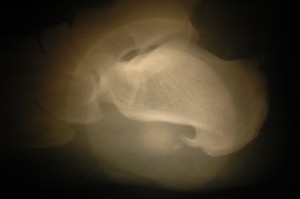Testimonials
REVIEWS OF DR. SCHULER
Metatarsal & Heel Pains are related says local Podiatrist
I wrote this in April 2011 for national distribution
Heel pain is a general term that includes many different etiologies including: plantar fasciitis, plantar fasia tear, tarsal tunnel syndrome, Baxter’s nerve entrapment, calcaneal stress fracture, calcaneal cysts, soft tissue mass, short flexor tendon tear, gout, and systemic arthritis (lupus, rheumatoid arthritis, psoriatic arthritis). While plantar fasciitis is the most common of these conditions, it is highly possible that heel pain could be something else and thus foot and ankle specialists need to be familiar with the range of possible diagnoses (http://www.mayoclinic.com/health/plantar-fasciitis/DS00508). One problem is that patients do not present right away when experiencing heel pain, unless they have an actual fascial tear that occurs during intense exercise, and is characterized by a “pop” sensation. Patients who have pain but do not experience an intense tear are likely to try many home therapies and endure weeks to months of chronic low-grade pain.
Dr. Burton S. Schuler http://www.footcare4u.com/category/about-dr-schuler/ has treated thousands of heel pain cases in his over 35 years podiatry of practice An author of two books on feet, including his most recent, Why You Really Hurt: It All Starts in the Foot, Schuler links heel pain to a short or hypermobile first metatarsal bone, which is a common condition but not so commonly linked to heel pain. Schuler makes a strong case for this connection between toe length and heel pain. This connection was made earlier by predecessor, Dr. Dudley Morton, who taught at Yale and Columbia medicals schools in the 1920-1940’s; and who wrote extensively about the short first metatarsal bone. This medical condition came to be known as “Morton’s Toe” because of Dr. Morton’s consistent research and writing on the condition (http://whyyoureallyhurt.com/#djm).
The first metatarsal bone is supposed to carry twice the weight as the second. But when it is shorter, it cannot carry this weight, requiring weight to be unevenly distributed and causing the second metatarsal bone to meet the ground before the first. The second metatarsal bone begins to do the first bone’s share of work, which places abnormal stress on many area of the foot—and that pain can spread not only to the legs but throughout the body. Another physician influenced by Dr. Dudley Morton, Dr. Janet Travell, studied how Morton’s Toe can be linked to myofascial pain in the body. Dr. Travell was a White House doctor to both Presidents Kennedy and Johnson, and she had attended Morton’s lectures on the foot (http://www.footcare4u.com/category/dr-janet-travell/). Dr. Morton, Dr. Travell, and their contemporary equivalent, Dr. Schuler, remind us that causes of chronic heel pain can be demystified if we consider the cases of people with short metatarsal bones.
About the Author: Dr. Burton S. Schuler foot doctor, foot specialist, podiatrist of Panama City, Fl and the director of the Ambulatory Foot Clinics Podiatric Pain Management Center and is a leading authority on the Morton’s Toe, Long Second Toe and it associated problems.

